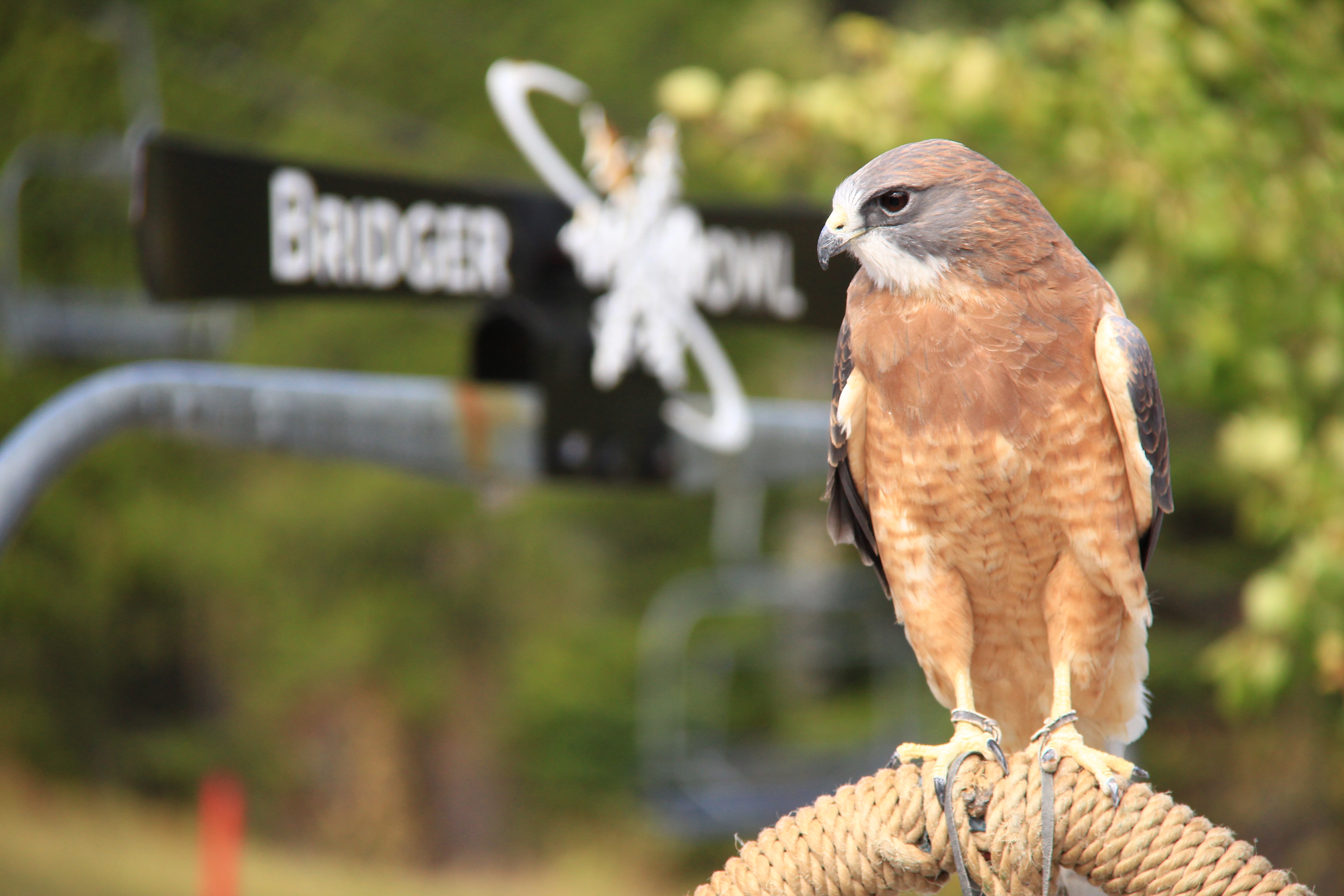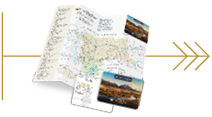Viewing Raptors in Yellowstone Country

Raptors, also known as birds of prey, are carnivorous (meat-eating) birds. Yellowstone Country is home to many, and they are not hard to spot with their magnificent presence. Each fall, many raptors migrate to the Southern US, Central America, and South America, returning in the spring to raise their families. However, some species, such as bald and golden eagles, and great gray owls, remain in Montana year-round.
The Largest Known Golden Eagle Migration
The Bridger Mountain range is home to the largest known golden eagle migration in the U.S., with 1,200- 1,500 birds flying each season. In addition to the eagles, eighteen more species are monitored, with an overall combined species count ranging from 2,000-3,000 each fall. In 1979, raptor enthusiast Fred Tilly discovered the migration and spent four migratory seasons counting the birds. The mountain range gained international recognition as a central migratory gateway in the early 1980s, and in 1991, Hawkwatch International established Bridger Bowl as one of the sixteen Rocky Mountain monitoring sites.
In 1993, a United States Forest Service biologist led a group of 40 people to the ridge at Bridger Bowl Ski Area to monitor the migration. By 1996, the Bridger Raptor Festival emerged, with 1,000 people in attendance and hundreds hiking the ridge. Today, over 5,000 people attend the annual weekend full of live raptors, educational presentations, family nature walks, live music, food, and beverages! It’s an excellent time for the whole family and a fantastic way to learn about these amazing birds.
Raptors in Yellowstone National Park
Montana is home to thirty-one species of raptors, with nineteen found in Yellowstone National Park and more during the migration and seasonal movements. Yellowstone closely monitors bald eagles, golden eagles, ospreys, and peregrine falcons. Bald eagles and peregrine falcons are no longer on the endangered species list, but the Park continues to monitor them. Osprey is observed because of the declining population of cutthroat trout, their primary food source. Golden eagles are affected by expanding energy development and increased human activity.
Hayden Valley is an excellent spot to watch for raptors, especially the Swainson’s hawks. In addition, Dunraven Pass, Mount Washburn, and Swan Lake Flats are good spotting locations.
Raptor Conservation Centers
There are three conservation centers in Yellowstone Country. Montana Raptor Conservation Center in Bozeman rehabilitates injured birds, providing medical care, physical therapy, and rehabilitation before releasing the birds back into the wild. They offer a lifetime home and long-term care for those unable to rejoin the wild. In addition, these birds serve as education birds for classrooms and events such as the Bridger Raptor Festival. Due to the rehabilitation taking place and the goal of releasing the birds back into the wild, the center is not open to the public to keep human contact to a minimum.
The public can view other raptors who cannot be released and have found a home at the Yellowstone Wildlife Sanctuary in Red Lodge and the Grizzly and Wolf Discovery Center in West Yellowstone.
 Bridger Raptor Fest, 2021.
Bridger Raptor Fest, 2021.
Tips for Spotting Raptors
- Most raptors migrate during the day when columns of rising air, called thermals, form as the sun warms the ground. The birds “ride” the thermals, allowing them to conserve energy while gaining altitude.
- Currents rising up the side of a mountain are particularly strong, bringing large numbers of birds to follow the north-south ridges of the Continental Divide.
- Afternoons are the best time to spot them when the wind picks up.
- Right after a storm is an excellent time for spotting them as the wind blows counterclockwise during a cold front.
What You Can do to Help Raptors
- Pick up litter, and refrain from littering, especially on roadways. Even organic trash can draw prey and increases the chance of raptors being hit by a car.
- Hang bird silhouettes in windows to prevent small hawks, falcons, and owls from colliding with the glass.
- Leave dead snags and old trees on the property for perching and nesting.
- Install kestrel boxes in open habitats on the property in the spring to attract nesting kestrels.
Check out more information on birding in Yellowstone Country, including birding ethics, or download Montana Fish, Wildlife, and Park’s guide for identifying raptors, “16 Raptors That Every Montanan Should (Kinda) Know.”


